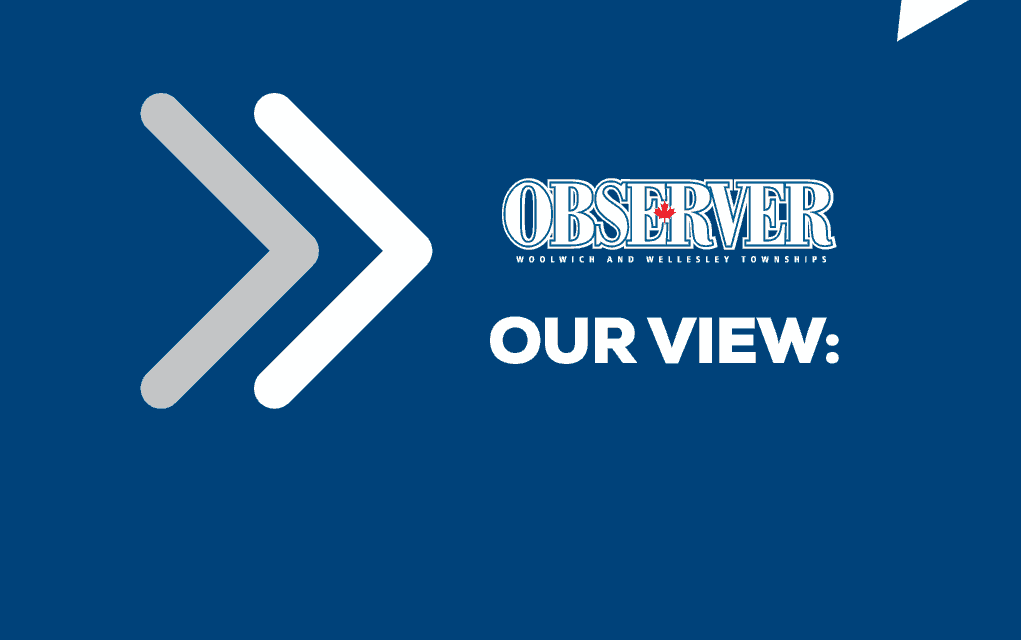The province may be holding steady next year the overall funding it provides to rural and Northern municipalities, but Woolwich is planning to see its share decrease, as it has done in the last few years.
Ontario Municipal Partnership Fund (OMPF) support to the township peaked in 2017 at $736,200, dropping to $452,000 this year. Wellesley Township, on the other hand, has seen its numbers remain much steadier since peaking in 2018 at $780,900 before falling a little bit to $772,300 this year.
In reducing the OMPF funding, the province limited the year-over-year decrease to a maximum of 15 per cent, with Woolwich seeing that cut annually, noted director of finance Richard Petherick.
His counterpart in Wellesley, treasurer Theresa Bisch, points out the impact has been much smaller there.
“In 2018 we received OMPF funding in the amount of $780,900. In 2019 we received $774,700 and in 2020 we will receive 772,300.”
Wellesley’s large agricultural land base and its rural makeup have helped kept the cuts fairly small, posited Mayor Joe Nowak.
“We’re fairly fortunate in that we didn’t get any big cuts,” he said.
Woolwich, meanwhile, has been forced to do some juggling of its budgets in recent years due to cuts that are much more noticeable. For instance, this year’s OMPF allocation is $80,000 less than in 2019, a figure that represents about three-quarters of a one per cent tax hike, Petherick notes.
While Woolwich has more growth and increases assessment dollars to go along with its more diversified tax base, there’s still ground to make up.
Citing
The Ontario government last month announced it would be maintaining OMPF funding levels at $500 million in 2021, the same as this year.
“Municipalities told us how vital the OMPF is to their communities and they need information sooner to plan their budgets,” Minister of Finance Rod Phillips said January 20 at the Rural Ontario Municipal Association annual conference. “That’s why we announced allocations for 2020 earlier than ever before, and why we’re committing today to maintain the funding envelope for next year.”
The province made a similar announcement last year about the “funding envelope,” so that doesn’t mean each municipality can count on the same OMPF grant next year.
“Nothing is official until it is official, but my take would be for Woolwich to continue to expect to another 15 per cent reduction in our OMPF allocation in 2021,” said Petherick. “Premier Ford made a similar announcement last August … and what he really was saying is that the province was going to maintain the amount for OMPF but the methodology on how it gets allocated to municipalities is not changing. This is why we received a 15 per cent reduction, which is their maximum reduction in any one year.”
The township and other municipalities have been advocating for stable and predictable funding from the province, along with new revenue tools (i.e. taxes and fees) to bolster their budgets.
“We always have issues such as our infrastructure deficit. No matter what, there’s never enough money,” said Nowak.
Kitchener-Conestoga MPP Mike Harris said the government would be looking at the OMPF funding formula for the 2021 budget year, with an eye on re-evaluating it.
The Ford government has also announced plans to review the property tax system that provides municipalities some $22 billion annually, but that’s with an eye on streamlining it to help the province be more competitive, particularly in regards the accuracy of the property assessment part of the equation.
OMPF allocations for the past five years:
- Woolwich 2016: $657,100
- Woolwich 2017: $736,200
- Woolwich 2018: $625,800
- Woolwich 2019: $532,000
- Woolwich 2020: $452,200
- Wellesley 2016: $576,700
- Wellesley 2017: $684,200
- Wellesley 2018: $780,900
- Wellesley 2019: $774,700
- Wellesley 2020: $772,300









